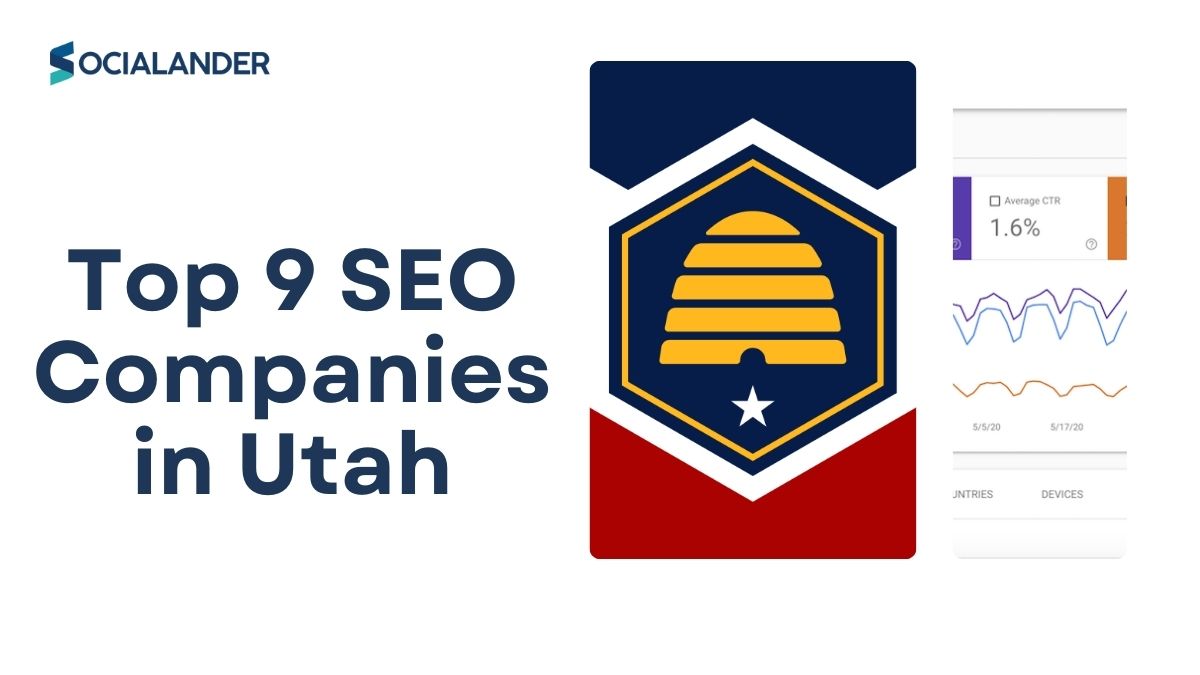Marketers who adopt AI without preparation risk wasted budgets, broken brand trust, and poor decisions. This article explains the real, current challenges of AI in marketing and gives clear, practical fixes you can use today. Socialander created this guide because many clients ask us how to adopt AI safely and get real results.
The promise is tempting: AI can write your ad copy in seconds, predict which customers will buy, and personalize thousands of emails at once. But the reality is messier. Companies rushing into AI marketing tools are hitting roadblocks around data quality, measurement accuracy, ethical risks, and organizational readiness. Some are seeing their ad performance worsen rather than improve.
This article walks through the major challenges that marketing teams face when implementing AI, drawn from current industry reports, privacy changes, and real-world case studies. More importantly, it provides actionable solutions you can start using this week.
At Socialander, we make use of helpful AI to help businesses navigate the digital marketing space without the hassle
1: Poor Data Quality and Fragmented Data Sources
If your data is incomplete, inconsistent, or scattered across disconnected systems, your AI will produce garbage results.
Most companies store customer data in silos. Your CRM holds contact details and deal stages. Your email platform tracks opens and clicks. Your ad platforms collect campaign data. Your website analytics sit in Google Analytics. Your e-commerce platform logs transactions. None of these systems talk to each other properly, and each uses different customer identifiers.
When AI tries to build audience segments or predict customer lifetime value from this fragmented data, it creates a distorted picture. You might target the same person three times with different messages because your systems don’t recognize they’re the same customer. Or you might completely miss high-value prospects because half their activity isn’t tracked.
How to Fix
Run a data audit first: Before implementing any AI tool, document what data you collect, where it lives, how accurate it is, and how it connects across systems. Identify your biggest gaps: duplicate records, inconsistent naming, missing timestamps, and critical events that aren’t tracked.
Unify your data centrally: Create a single source of truth where all customer touchpoints connect to one canonical customer ID. This might be a data warehouse (BigQuery, Snowflake, Redshift) or a customer data platform. Use ETL tools like Fivetran or Airbyte to move data between systems.
Improve tracking implementation: Implement server-side tracking where possible. Set up Conversions API (CAPI) for Facebook and equivalent solutions for other platforms. This sends conversion data directly from your server to ad platforms, bypassing browser restrictions and capturing conversions that pixel-only tracking misses.
Canonicalize customer identifiers: Create a consistent way to recognize the same person across devices and sessions, typically by hashing email addresses when someone logs in or submits a form.
2: Measurement and Attribution Gaps
Privacy regulations, platform restrictions, and browser changes have made it much more difficult to track which marketing activities actually drive results.
Apple’s iOS privacy changes, browser tracking restrictions, and platform limitations have created substantial measurement gaps. When someone clicks your ad on their iPhone then later buys on their laptop, that connection often gets lost. Your ad platform shows fewer conversions than actually happened. Your AI optimization system makes decisions based on incomplete information.
When measurement is noisy, your AI’s learning process suffers. Return on ad spend calculations become less reliable. Customer lifetime value predictions miss important conversion events.
How to Fix
Implement server-side tracking: Send conversion data directly from your server to advertising platforms using Facebook’s Conversions API, Google’s enhanced conversions, and similar tools. This captures conversions that browser-based tracking misses while remaining privacy-compliant.
Prioritize high-value events: Ensure your AI optimization systems focus on events that actually matter. These include completed purchases, qualified leads, subscription activations rather than softer metrics like page views.
Reconcile regularly: Every week or month, compare what your ad platforms report with what actually happened in your CRM or transaction database. Quantify the gap so you can interpret AI optimization results with appropriate skepticism.
Use realistic attribution windows: With privacy restrictions, long attribution windows capture fewer conversions than they used to. Consider using shorter windows that more accurately reflect the data you can actually track.
3: Bias, Fairness, and Ethical Risks
AI doesn’t create bias, it learns and amplifies the biases already present in your historical data and human decisions. When that data reflects past discrimination or imbalanced outcomes, the AI perpetuates those patterns. If your past successful customers skewed heavily toward one demographic group, your AI targeting system will naturally favour similar audiences and exclude others, even if those excluded groups would actually be interested in your product.
Legally, discriminatory advertising violates consumer protection laws in many countries. You can face fines, lawsuits, and regulatory sanctions. For brand reputation, one viral example of biased AI output can destroy years of trust-building. And from a pure business perspective, if your AI systematically excludes potential customers, you’re leaving money on the table.
How to Fix
Conduct bias audits regularly: Before launching an AI marketing campaign, analyze who gets included and excluded. Look at demographic breakdowns of your AI-selected audiences. If you’re using AI for creative generation, test outputs across different prompts related to diverse people and contexts.
Use balanced training data: If you’re training custom models, ensure your training data includes diverse examples. If certain customer segments are underrepresented in your historical data, consider techniques like oversampling to balance the training set.
Add human review gates: Don’t let AI make fully autonomous decisions for sensitive campaigns or high-value customer segments. Require human approval for AI-generated targeting criteria, creative content, or personalized offers.
4: Hallucinations and Misinformation from Generative AI
Generative AI has a dangerous flaw: it confidently makes things up. In AI terminology, these fabrications are called “hallucinations,” and they create serious liability for marketers.
Large language models (LLMs) sometimes generate content that sounds authoritative but contains factual errors, misstatements, or completely invented information. An AI might write ad copy claiming your product has features it doesn’t have, cite fake statistics, misstate regulatory compliance details, or invent customer testimonials.
The outputs often sound polished and professional, making the misinformation harder to catch. A human would hesitate before making an unsupported claim. AI generates it confidently.
How to Fix
Implement human review: Never publish AI-generated marketing content without human review. Someone with subject matter expertise needs to verify that everything stated is factually accurate and brand-appropriate.
Create factual verification checklists: For any AI output that makes specific claims about product features, performance metrics, compliance, or competitive comparisons, verify each claim against authoritative sources.
Use canned responses for critical claims: For regulated claims, legal disclosures, or key product facts that must be stated exactly right, maintain a library of approved language and have AI pull from these pre-verified templates.
Limit AI autonomy for sensitive content: For highly regulated industries or sensitive topics, use AI more as a drafting assistant than an autonomous creator. Have it generate outlines or rough drafts that humans substantially rewrite.
5: Brand Voice and Creative Control
AI-generated marketing content often lacks the cultural awareness, emotional intelligence, and brand understanding that humans take for granted. Your brand has a personality that comes from countless small word choices and editorial decisions. AI struggles to consistently match brand voices without extensive training and ongoing guidance. An AI might generate technically correct ad copy that sounds generic and could work for any competitor.
How to Fix
Develop detailed brand voice guidelines: Create a comprehensive style guide that documents tone, vocabulary, forbidden phrases, and example approved versus not-approved content. Use this to train your team and configure AI tools.
Require human editing: Don’t just have someone check that AI content is “okay.” Require that a skilled human editor actively improve every AI draft, adding nuance and ensuring it sounds authentically like your brand.
Create cultural review boards: For global campaigns or content touching on sensitive topics, have people from relevant backgrounds review AI outputs before publication.
Establish a content approval workflow: Map out who reviews AI-generated content before it goes live. For routine posts, maybe one approval level suffices. For major campaigns, require multiple reviewers including senior leadership.
Read also AI personas for b2b marketing and how to create and leverage them for marketing success.
6: Skills Gap and Organizational Change
The skills gap in AI isn’t just about technical expertise, it’s also about new workflows, different roles, and organizational structures.
Implementing AI effectively requires roles that didn’t exist five years ago. For example prompt engineers, AI operations specialists, data engineers, and AI ethics leads. For many marketing teams, especially in small and mid-sized companies, these roles simply don’t exist.
Understanding how to effectively work with AI tools requires both technical knowledge and creative experimentation. What makes a good prompt? How do you evaluate whether an AI recommendation is actually good? When should you trust the algorithm versus overriding it? These aren’t obvious.
How to Fix
Invest in training programs: Provide structured learning opportunities through online courses, workshops, or external trainers. Focus on practical, hands-on training with your actual tools and use cases.
Hire critical specialist roles: For companies serious about AI marketing, you likely need at least one person with strong data and technical skills. This person becomes the bridge between your marketing team and your AI tools.
Partner strategically: If hiring these roles internally isn’t feasible, consider working with agencies or consultants who bring these capabilities. A good AI-savvy marketing partner provides both strategic guidance and hands-on implementation while training your team.
Start with small pilots: Pick one use case, maybe AI-assisted email personalization or automated audience segmentation for one campaign. Execute it well, learn from it, document what worked. This builds competency and confidence before expanding.
7: Governance, Compliance, and Legal Risks
Data privacy laws, advertising regulations, intellectual property rights, and emerging AI-specific rules create compliance obligations that many marketers don’t fully understand.
GDPR in Europe, CCPA in California, Nigeria’s NDPR, and similar laws in many other jurisdictions strictly regulate how you collect, store, and use personal data. AI personalization depends on customer data, which means these regulations directly constrain what you can do.
You need explicit consent to use personal data for automated decision-making in many jurisdictions. You must allow people to opt out of profiling. You have to provide transparency about how AI uses their data. If your AI makes false claims, you’re liable. “The AI made it up” isn’t a defense.
How to Fix
Get legal review: Before implementing significant AI marketing capabilities, have your legal team review your plans. What data are you using? Where does it come from? What’s the legal basis for processing it?
Implement strong consent management: Make sure you have proper consent for collecting and using customer data for AI personalization. This means clear consent language, easy opt-out mechanisms, and systems that respect consent status in real-time.
Practice data minimization: Only collect and use the data you actually need. More data creates more legal liability. Be disciplined about limiting data collection to what’s necessary.
Create an AI governance framework: This is a set of policies, procedures, and accountability structures for how your organization uses AI. Document what AI use cases are approved, who has authority to implement AI tools, how AI projects get evaluated for risks, and how you respond when problems occur.
Run data protection impact assessments: For high-risk AI use cases involving sensitive data or automated decision-making that significantly affects customers, conduct a data protection impact assessment (DPIA) that identifies privacy risks and how you’ll mitigate them.
8: Customer Trust and Perception
Many customers worry about manipulation, privacy invasion, and losing human connection. How you use AI and how transparent you are about it directly affects customer trust. When customers discover they’ve been interacting with AI (especially if they thought they were talking to a human), reactions often turn negative.
When AI analyzes behavioural data to predict exactly which message will make you buy, it feels manipulative even when legal and technically impressive.
How to Fix
Disclose AI use appropriately: Be transparent when AI plays a significant role in customer interactions. For chatbots and virtual assistants, make it clear customers are interacting with AI. For AI-generated content, consider disclosure when it’s significant.
Maintain human customer service options: Don’t force customers to interact only with AI. Provide clear paths to reach human support when needed, especially for complex issues, complaints, or emotionally sensitive situations.
Measure customer sentiment regularly: Track how customers feel about your AI-powered experiences using surveys, social listening, and customer service feedback. If sentiment trends are negative, adjust your approach.
Give customers control: Let people opt out of AI personalization if they prefer. Provide privacy controls that are genuinely functional. Explain what data you’re using and why.
Use AI ethically: Follow ethical principles: avoid bias, ensure accuracy, respect privacy, maintain brand voice. Ethical AI use isn’t just about avoiding legal problems; it’s about building customer trust.
Moving Forward: Implementation Strategy
The question isn’t whether to use AI in marketing, but how to do it well to capture benefits while avoiding pitfalls.
Start with strategy, not tools. The biggest mistake companies make is buying AI marketing tools before understanding what problems they’re trying to solve. Begin with clear business objectives. Where are your current marketing efforts falling short? What would better performance look like?
Build foundations before adding AI. AI amplifies whatever foundation you have. If your basics are solid, AI makes you significantly better. If they’re broken, AI makes the problems worse.
Invest in data quality, tracking accuracy, team skills, and governance structures first. These investments pay off even without AI, and they make AI implementations far more successful when you’re ready.
Adopt incrementally, learn continuously. Don’t try to revolutionize your entire marketing operation overnight. Pick one use case. Implement it carefully. Measure results. Learn what works in your specific context. Then expand to the next use case. This iterative approach limits risk, builds organizational capability, and creates a track record of success.
Keep humans in the loop. AI should augment human marketers, not replace them. The most successful implementations use AI for what it does well: processing large datasets, generating creative variations, optimizing at scale while relying on humans for strategic thinking, creative direction, ethical judgment, and relationship building.
Stay customer-centric. Every AI decision should consider customer impact. Does this make their experience better or just more profitable for you? Would customers feel good about this if they knew how it worked? Companies that use AI to genuinely serve customer needs will build sustainable competitive advantage.
Check out other articles on AI for marketing growth





